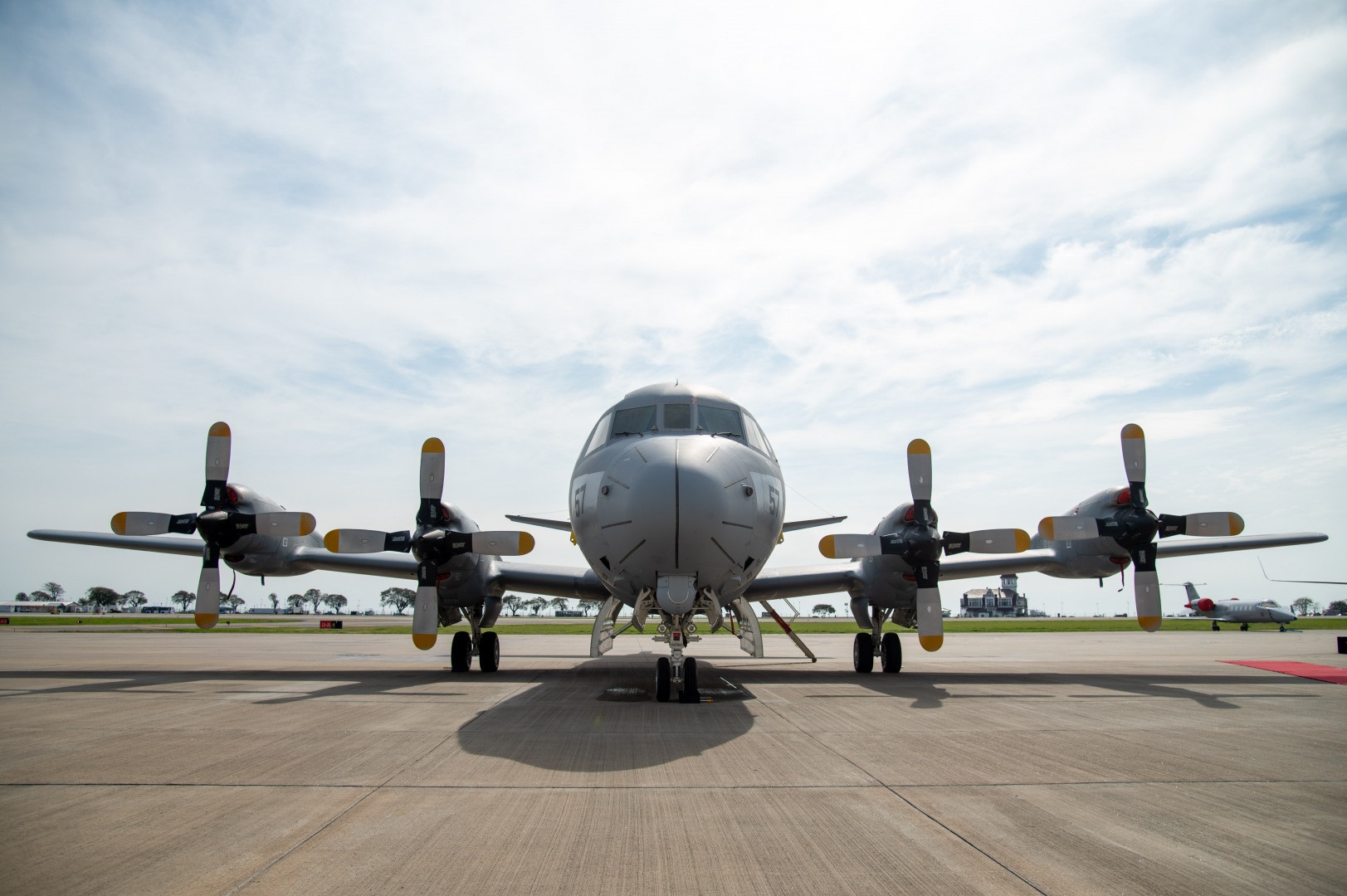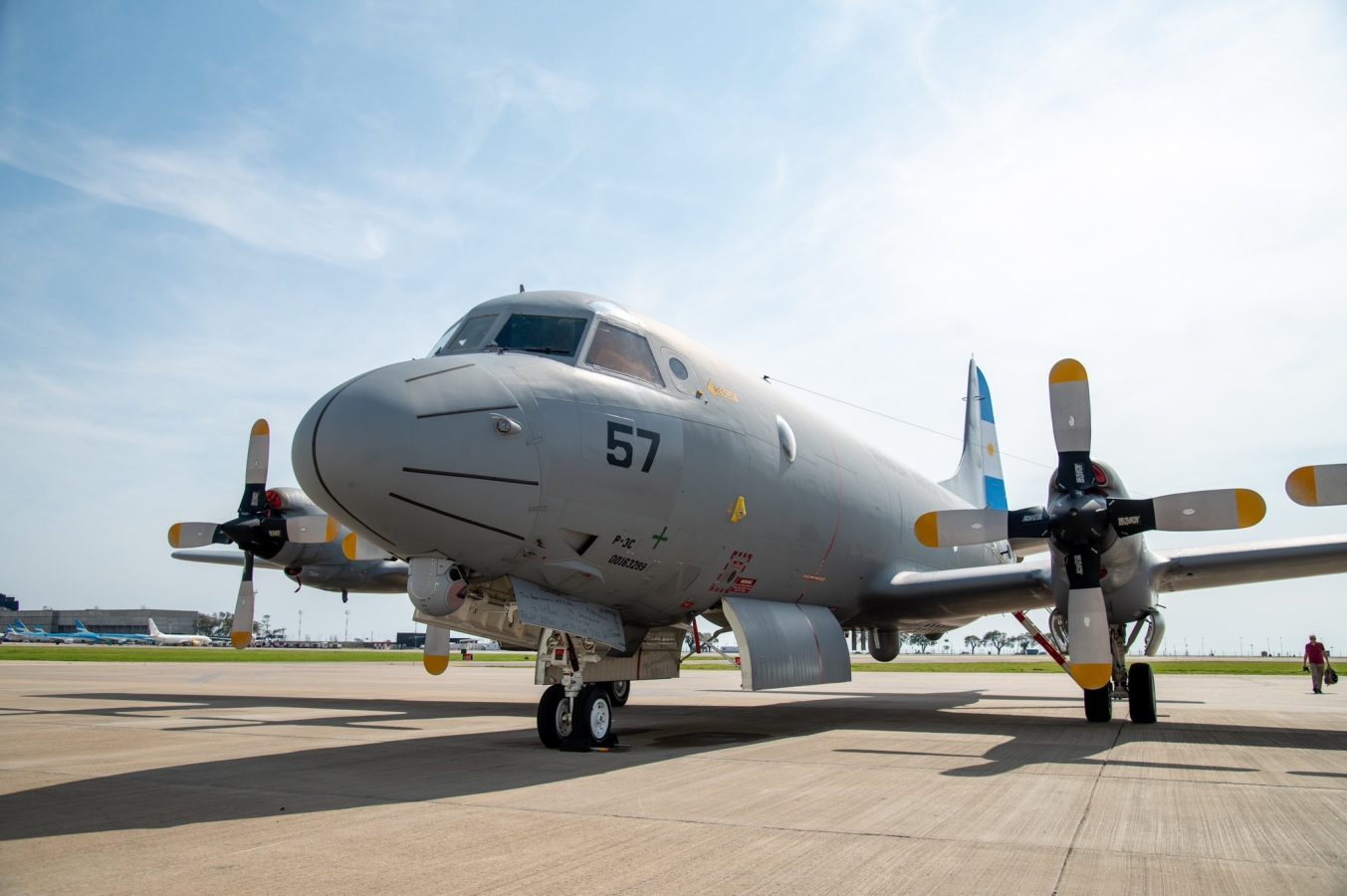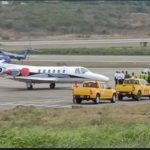The Minister of Defense, Luis Petri, headed yesterday the ceremony of incorporation of the first of the four Lockheed Martin P-3C Orion aircrafts acquired from Norway to increase the capabilities of the Argentine Navy’s (ARA) aviation for the surveillance of maritime territories.
The ceremony took place at the Aeroparque Military Air Base, inside the Jorge Newbery airport in the city of Buenos Aires. The Minister of Defense was accompanied by the Chief of the Joint Chiefs of Staff of the Armed Forces, Brigadier General Xavier Julián Isaac, and the chiefs of the Argentine Navy, Vice Admiral Carlos María Allievi, of the Air Force, Brigadier General Fernando Luis Mengo, and of the Argentine Army, Major General Carlos Alberto Presti. The Ambassadors of the Kingdom of Norway, Halvor Sætrey, and of the United States of America, Marc Stanley, also participated, among other officials, representatives and special guests.

The Argentine Ministry of Defense informs that the incorporation of the P-3 Orion is part of the National Public Investment Project, whose objective is to improve the operational and logistical capabilities of the Naval Aviation Command’s search and exploration aircrafts. The purchase includes three P-3C aircrafts and a P-3N mobile logistic support aircraft, all of them subject to an ASLEP (Aicraft Service Life Extension Program), which guarantees a remaining 17,000 flight hours, equivalent to at least 15 years of service.
“These aircraft bring our capabilities in line with those of the rest of the region, also taking into account the dimension of our maritime coastline and the need to control and monitor it from the enormous challenge we have with the possible intrusion of fishing vessels in our Exclusive Economic Zone, and from there the need to strengthen and complement the task that our patrolling OPVs do with satellite systems, with aircrafts and also with unmanned aircrafts,” said Minister Petri during the ceremony.
This first P3-C Orion, which arrived in the country on September 2, was re-registered nationally as 6-P-57 and will be based at the current Naval Air Exploration Squadron (EA6E) belonging to the Naval Air Force No. 3, located at the Almirante Zar Naval Air Base, in the city of Trelew (Chubut).
P-3C Orion Capabilities
The extensive radius of action of these aircraft, which is 1,500 nautical miles (2,780 km), added to their 12-hour flight autonomy, allows them to cover the Argentine maritime coastline, continental platform and Antarctica without inconveniences, allowing them to remain in a given zone or area for prolonged periods of time.
The modern sensors of the P-3Cs acquired by Argentina, such as the Raytheon AN/APS-137(V)5 synthetic aperture radar (SAR) and inverse synthetic aperture radar (ISAR), or its EO/IR AN/AAS-36 Infrared Detecting Set (IRDS) optronic tower, allow the exploration of large maritime areas and the identification of detected targets.
During their latest modernization, these Orions received the ALR-66B(V)6 ESM system and the AN/AAR-47 missile approach warning system for self-protection, along with chaff and flare launchers.

The modernization of the P-3Cs included the integration of ARC-207 HF radios, satellite communication systems, inertial navigation and GPS, as well as an OASIS-III over-the-horizon guidance system and a new ASQ-212(V) mission computer. These systems, together with modern acoustic processors, magnetic anomaly detector and automatic ship identification system, provide the Argentine Navy with unprecedented underwater and surface detection and tracking capabilities.
Frigate Captain Juan Manuel Janiot, commander of the recently incorporated P-3 Orion, highlights the significant technological advance that these aircraft bring to the Navy:
“This equipment represents an unprecedented qualitative leap in our capabilities. The Argentine Navy has never had technology of this level, which demands intense training and adaptation on the part of our personnel.”








